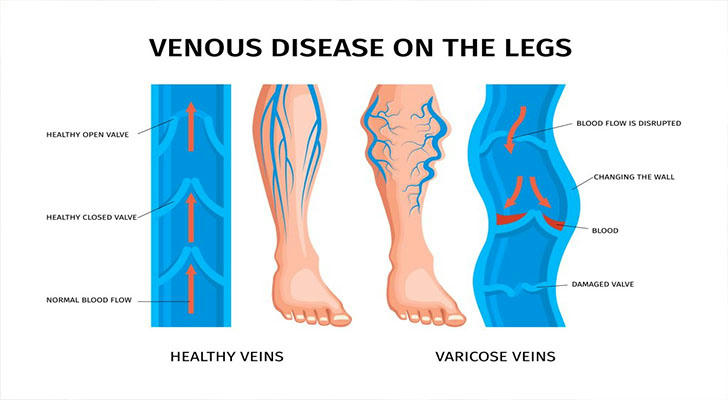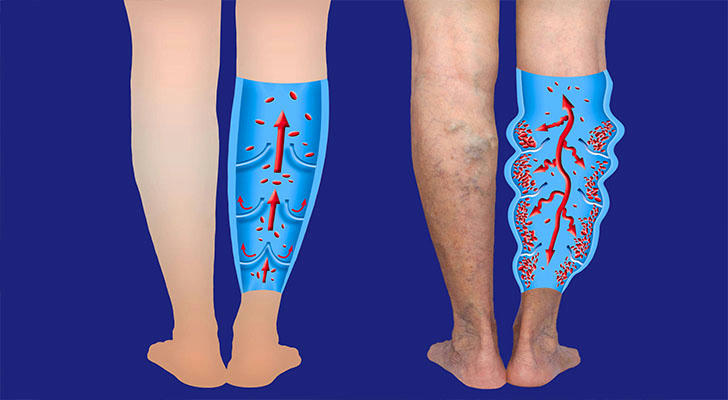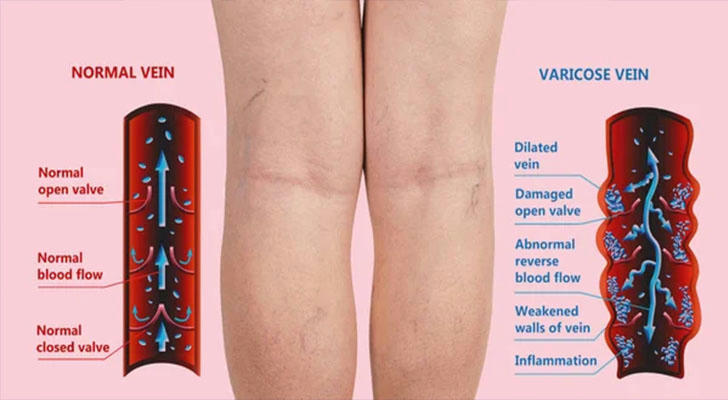Understanding Varicose Veins

Varicose veins are a common condition that affects millions of people worldwide. Often seen as a cosmetic issue, they can lead to more serious health problems if left untreated. This article aims to provide an overview of varicose veins, including their causes, symptoms, diagnosis, and treatment options.
Understanding Varicose Veins
1. What Are Varicose Veins?
Varicose veins are enlarged, twisted veins that usually appear on the legs and feet. They occur when the valves in the veins fail to function properly, causing blood to pool and the veins to become swollen and discolored.
2. Causes of Varicose Veins
•Weakness in Vein Walls: The primary cause is often genetic predisposition, leading to weak vein walls and faulty valves.
•Increased Pressure: Factors such as prolonged standing or sitting, obesity, pregnancy, and chronic constipation can increase pressure in the veins.
•Age: As people age, the valves in their veins may weaken, increasing the risk of varicose veins.

3. Symptoms of Varicose Veins
•Visible Bulging Veins: The most noticeable symptom is the appearance of bulging, twisted veins on the legs.
•Pain and Discomfort: Many individuals experience aching, heaviness, or fatigue in their legs, especially after standing for long periods.
•Swelling: Swelling in the legs or ankles may occur due to poor circulation.
•Skin Changes: In severe cases, skin discoloration, itching, or even ulcers may develop around the affected area.

4. Risk Factors
Certain groups are more prone to developing varicose veins:
•Occupational Hazards: Jobs that require prolonged standing (e.g., teachers, retail workers) increase risk.
•Genetics: A family history of varicose veins significantly raises one's chances of developing them.
•Lifestyle Factors: Sedentary lifestyles and obesity also contribute to the likelihood of developing this condition.
5. Diagnosis
Diagnosis typically involves:
•Physical Examination: A doctor will examine the legs while standing to look for visible signs of varicose veins.
•Ultrasound Testing: This non-invasive test helps assess blood flow and check for any valve issues in the veins.
6. Treatment Options
Treatment for varicose veins varies based on severity:
•Conservative Treatments: For mild cases, lifestyle changes such as elevating the legs, wearing compression stockings, and engaging in regular exercise can alleviate symptoms.
•Medications: Certain medications can help improve vein health and reduce discomfort.
•Surgical Options:
•Sclerotherapy: A procedure where a solution is injected into the vein to close it off.
•Laser Treatment: Uses heat to close off varicose veins without incisions.
•Vein Stripping: A surgical procedure that removes large varicose veins.
Case Study 1: John’s Experience with Sclerotherapy
John, a 50-year-old warehouse manager from Atlanta, Georgia, had been experiencing painful varicose veins for over five years. His job required him to stand for up to 10 hours a day, which contributed to increased pressure on his veins. Over time, John noticed bulging veins in his legs, along with aching and swelling, especially after long work shifts. He tried wearing compression stockings, but the discomfort persisted, and his veins became more pronounced.
John decided to seek professional help and consulted a vascular specialist in his local area. After a thorough physical examination and an ultrasound, it was confirmed that John had moderate varicose veins, primarily due to his occupation and lifestyle. His doctor recommended sclerotherapy, a non-invasive procedure where a special solution is injected into the affected veins, causing them to collapse and eventually be reabsorbed by the body.
John underwent two sessions of sclerotherapy over a three-month period. The treatment was well-tolerated, with minimal downtime. Within weeks, he noticed a significant reduction in both the pain and appearance of the veins. His swelling also decreased, and he was able to return to his job without the discomfort he previously experienced.
This case highlights how sclerotherapy can be a highly effective solution for individuals with moderate varicose veins, particularly for those in physically demanding jobs like John’s. By addressing the issue early, John avoided more invasive treatments and was able to return to his normal activities without further complications.
Case Study 2: Maria’s Recovery with Laser Treatment
Maria, a 38-year-old administrative assistant from Dallas, Texas, had been noticing small varicose veins on her legs for a couple of years. Working a desk job meant long hours of sitting, and over time, she began experiencing symptoms like heaviness and aching in her legs, particularly after sitting for extended periods. Her veins became more visible, and she started to worry that her condition was worsening.
After researching treatment options, Maria consulted a vascular doctor who recommended endovenous laser therapy (EVLT), a minimally invasive procedure in which a laser is used to close the affected veins. EVLT is known for its effectiveness in treating mild to moderate varicose veins, and it doesn’t require incisions, making it ideal for individuals with busy lifestyles like Maria.
Maria underwent the procedure at a well-established clinic in Dallas. She was able to return to her desk job the next day with no need for significant recovery time. Over the next few weeks, her symptoms—such as swelling and discomfort—reduced significantly, and the veins became less noticeable. Her doctor was pleased with the outcome and confirmed that the procedure had been successful in closing the problematic veins.
Maria’s case shows how laser treatment can offer a fast and effective solution for individuals with mild varicose veins, especially those with sedentary jobs. It is a convenient option for people who may not want to take time off work and who prefer a treatment with minimal recovery time.
Case Study 3: Linda’s Decision to Undergo Vein Stripping
Linda, a 62-year-old retired nurse from Chicago, Illinois, had been living with varicose veins for over 20 years. She spent the majority of her career on her feet, and as time went on, she noticed the veins in her legs becoming more swollen and painful. Despite wearing compression stockings and making some lifestyle changes, her symptoms only worsened. Linda’s veins had become very large, and she experienced severe aching, swelling, and even ulcers on her legs.
After a consultation with a vascular surgeon, Linda was diagnosed with severe varicose veins that required more intensive treatment. Given the size of her veins and the chronic pain, her doctor recommended vein stripping, a surgical procedure in which the affected veins are physically removed. Though vein stripping involves a longer recovery time compared to other treatments, it was the most effective option for Linda, considering the advanced state of her condition.
Linda underwent the vein stripping procedure at a reputable hospital in Chicago. The surgery was successful, and she followed a strict post-operative care plan, including compression therapy and limited physical activity for a few weeks. After several months of recovery, Linda reported a significant improvement in her symptoms, including reduced swelling, less pain, and the complete disappearance of the ulcers that had previously plagued her.
Linda’s story emphasizes that in cases where varicose veins are severe and non-invasive treatments are no longer effective, vein stripping can provide lasting relief. Her decision to proceed with surgery, guided by medical advice, allowed her to regain comfort and mobility in her daily life.
Conclusion
Varicose veins are more than just a cosmetic concern; they can lead to significant discomfort and health issues if not addressed. Understanding their causes, symptoms, and treatment options is crucial for effective management. If you suspect you have varicose veins or are at risk, consult a healthcare professional for guidance tailored to your situation. Taking proactive steps can help maintain your leg health and overall well-being.
